#ole lukøje
Text
My tag for this series is 'fairy tales'.
#polls#fairy tales#folktales#woe or happiness#heart of stone#the troll's daughter#the snake prince#blondine#the little golden fish#ole lukøje#bella venezia#tír na nóg
17 notes
·
View notes
Text
I think one of the greatest failings of modern society is that most Sandman depictions don’t have umbrellas anymore
That’s what made Ole Lukøje himself!! That’s what set him apart from his brother and his horse! That’s how he spread the funny little thoughts into children’s minds. And you take that from him??
#sandman myth#sandman lore#sandman#ole lukøje#hans christian andersen#words#admin#rise of the guardians concept art did depict Sandy with an umbrella in early drawings and he had it a grand total of once in the movie#so at least Bill Joyce is somewhat aware of this#even if no one's actually talking about it
2 notes
·
View notes
Photo
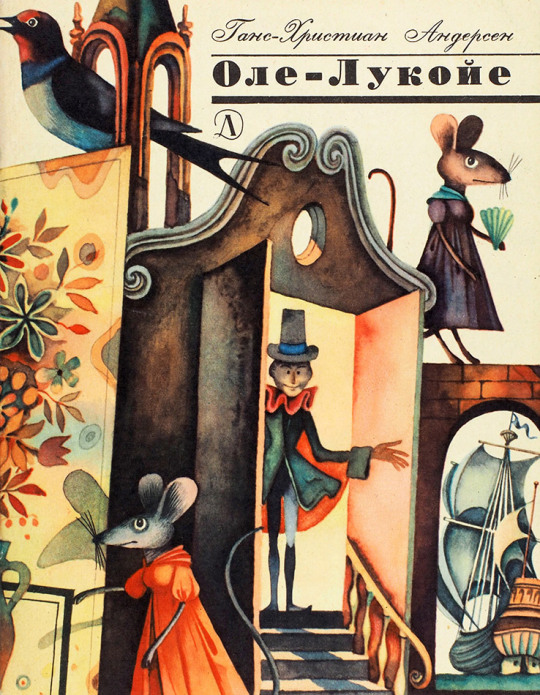



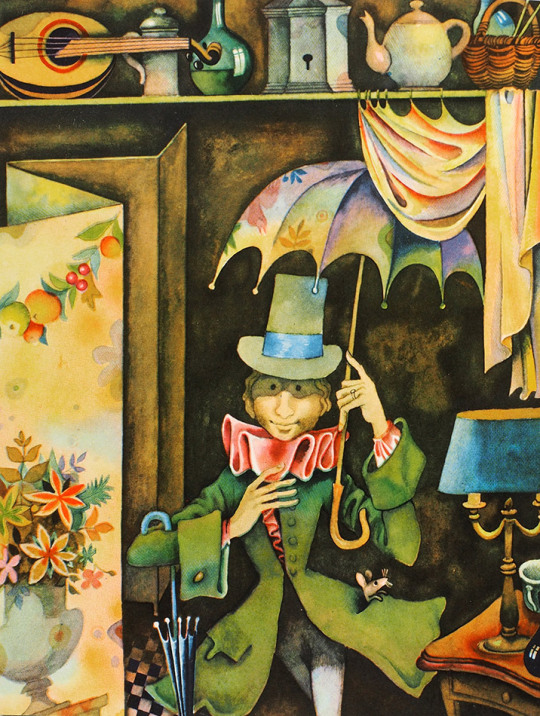
Viktor Pivovarov. Illustrations for Hans Christian Andersen’s “Ole Lukøje” (1969).
192 notes
·
View notes
Text
Hey sweaties,
I'm Silk and this will be the official dev log for all projects currently under development by me. I am a single dev team with hopes to grow but for now I am the sole artist, writer and coder. I have a full time job and am new to writing so I'm slow going but I like doing it.
I'm developing a few visual novel games that are in various stages of pre-dev that I will be sharing on here and post updates on as they go.
I'm also here because my previous devlog was on Twitter and we all know where that's going.



Here's a few of my games currently in development!

Chimera is planned to be a bigger project broken up into different games. For now it is a point and click adventure game in the visual novel style.
The story follows a private detective, on a mission to find a missing person who's case had been dropped by the local authorities. The mission thrusts you into the range of the local organized crime underworld. While undercover as a housekeeper at a luxury hotel, you will have to navigate the other workers, the pompous guests, and this guy who's trying to break in that claims he's a vampire.
That's what I said, Vampire. Yeah, there's going to be monsters in this game. This concept spawned from my desire to date monsters but it evolved into a bigger project.



Once, in a Dream is planned to be a free to play game I devised while I practiced coding an in depth routes system in Ren'Py.
You play as the Ole Lukøje, aka the Sandman, whose purpose in life is to grant the children dreams while they sleep. Though you travel to many worlds, you can only exist in one of the mind. On your journey you meet 3 peculiar little girls; two who are trapped in an endless slumber and can forever dream, and another who dreams of never growing up, and somehow gets her wish...without you.


This last one is only one concept art deep but I like it enough to make real. Furry dating sim where you're the child of a newly elected politician and are thusly now involved in the intergalactic politics of everyone else. Will you keep the peace or pursue your own interests?
Working title is Star Furs, aka all the star fox fan fiction i never wrote down.

I'll be posting more about each project as it goes but if you like any of these, I hope you'll enjoy following my development of them. Feel free to ask me questions.
#visual novel#game development#game dev#indie game#dev blog#blog intro#pinned post#concept art#character design
38 notes
·
View notes
Text
In my Sandman Facebook group we were having a conversation about the summoning spell that trapped Morpheus. There is a line in the comic and audio book version "I give you a name and the name is lost." which is not used in the Netflix series version of the scene, probably for time constraints. Someone brought up an interesting idea I hadn't considered before. That the "I give you a name and the name is lost" might be in relation to Morpheus.
They thought it was because Morpheus dies. But his name wasn't lost. Everyone still knows his name. And he's very likely spending his afterlife in Hob's dream. However... a name was lost to history.In Magick if a name is lost no one can remember it. And it occurred to me, there IS a lost name in relation to Morpheus. In Greek mythology Morpheus is one of the Oneiroi. He is an Oneiros, but it's not a name. It's a function. It's Greek for Dream. In the myths There were many of them.
Ovid only recorded the names of three Oneiroi (Dream entities). Phantasmos (Fantasy), Phobetor (Frightener) apparently more politely known as Icalus. And Morpheus (Shaper of forms). Over time as the folklore evolved Morpheus was the only one remembered and he became the one popular culture associates with The Sandman. He's the one in Hans Christian Andersen's version of the story. Ole Lukøje mentions he was a Roman God. That would be Morpheus.My point is this.
We know Morpheus's Roman name thanks to Ovid recording it, but there is no record of his Greek name other than the word Oneiros meaning dream, which is what he is but not a name. The Greek name for Morpheus. is. lost. Only the Roman name survives.
I know he was trying to summon Death but no one ever said that the name lost had to be a name of Death.

20 notes
·
View notes
Text

He had to remind us who Morpheus is in Danish, but reluctantly. Ole Lukøje is such a goofy character in the Danish consciousness that it's jarring enough that he resorts to Danglish for Sandman instead, lol.
#the sandman#netflix sandman#he enjoys it though#it's a review echoing what everyone else is saying: it's great#danske sager#sandman review
5 notes
·
View notes
Text

Wikipedia had a page on Ole Lukøje and it mentions nothing about the rainbow clothing or milk.It does make me think I must have done something to offend the sleep spirits at some point though.
0 notes
Text
So I finally got around to reading Hans Christian Anderson's tale about Ole Lukøje (known as Ole-Luk-Oie in English), since that seems to be Joyce's inspiration for his version of the Sandman... and it's so strange. I love it
Just wanted to share some of my favorite wtf moments
1: Hjalmar threatens a bunch of chickens

2: Two dolls ask some birds where to have their honeymoon

3: Old man heckles Ole Lukøje

4: Casually threatens child with death/Old man heckles Ole Lukøje Pt. 2
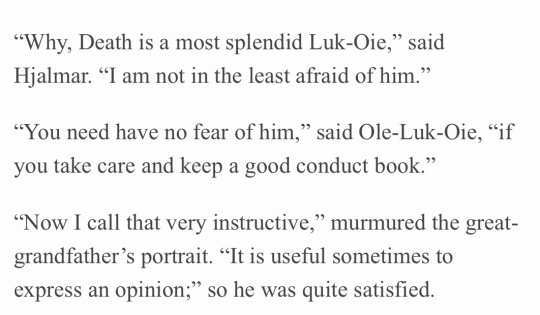
If you have time and are fond of strange tales like me the text can be found here. I'd say it's worth parsing through the old wording
7 notes
·
View notes
Photo


meet ole lukøje or just luko :)c
mr sandman assassin he works for dulla
9 notes
·
View notes
Photo

“Ole Lukoje Rode to War” by korintic.
3 notes
·
View notes
Photo

one of the illustrations i made for my uni work. this one is “Ole Lukoje” from H.C.Andersen fairy tale
23 notes
·
View notes
Photo
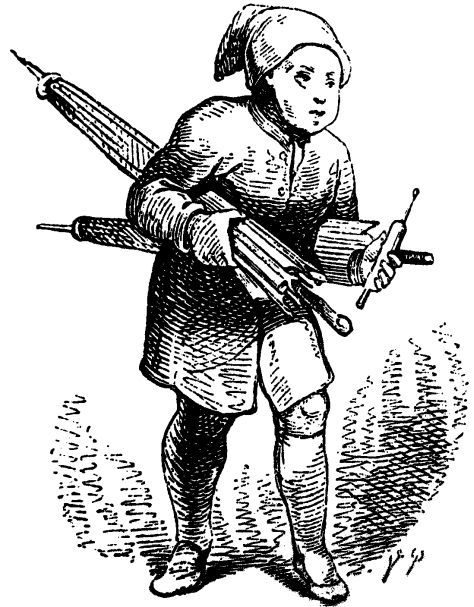
Ole Lukøje is a fairytale being analogous to the Sandman. He eases children into sleep, and will deliver different dreams to them, dependent on how the child has behaved. He carries an umbrella under each arm. One contains pictures, which he will hold above a good child to bring pleasant dreams. The other is blank, and will deliver a heavy, dreamless sleep to naughty children.
Ole Lukøje first appeared in the story of the same name by Hans Christian Andersen. His name comes from the words for “close” and “eye.”
Image source.
Monster master list.
Suggest a spook.
48 notes
·
View notes
Text
Origin of the Folkloric Sandman (with sources)
Earlier today someone asked me if The Sandman originated with the Charlottes song. Buckle up. You’re in for a long ride...
The idea of The Sandman originates from European folklore. It may actually be an evolution of the idea of Morpheus and the other Oneiroi in Greco-Roman mythology.
in Greek mythology there were these beings known as the Oneiroi which meant Dreams. They were supposed to have black wings. Oneiros directly means Dream. The Romans named three of them. Phobetor (Terrifier, as their preference was making Nightmares) though he was sometimes called by a more friendly name of Icalus (Not to be confused with Icarus), Morpheus (Shaper, whose dreams were usually metaphorically or literally true), and Phantasmos (Fantasy). Their names can be found in Metamorphoses by Ovid.
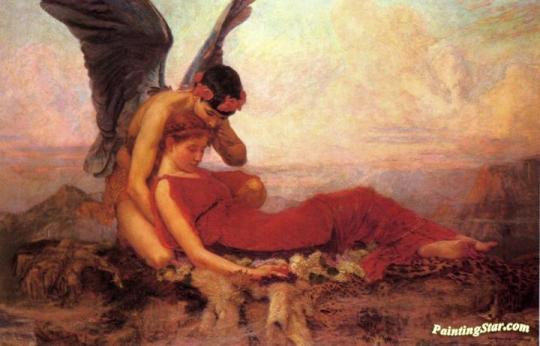
Phobetor AKA Icalus, the Nightmare making Oneiros, may have been the basis for Nightmare, Marvel’s equivalent character to Dream AKA Morpheus from Neil Gaiman’s The Sandman for DC Comics (though in comics Nightmare came first).

Over the years, in society’s collective consciousness, only Morpheus was really remembered. And the modern idea of him is he creates both dreams and Nightmares.

The gates of horn and ivory in the realm of dreams, which are also mentioned in Neil Gaiman’s The Sandman, were mentioned in Homer's The Odyssey. The Gates of Horn admit true dreams, the gates of ivory admit the deceptive dreams.
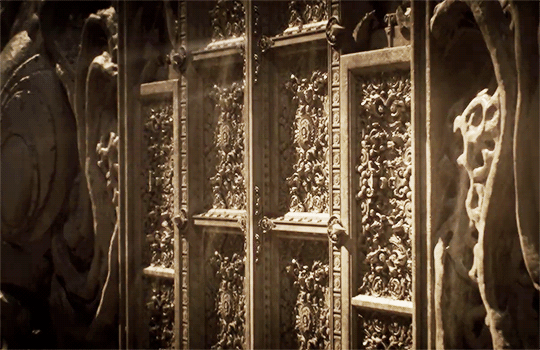
In 1841 Hans Christian Andersen published a story called Ole Lukøje (meaning close-eye) about a strange man who would sprinkle "Sweet milk" in your eyes to induce sleep and dreams. In the story Ole Lukøje tells us he is the Roman God of Dreams, making it clear he is also Morpheus (as around this time his fellow Oneiroi were mostly forgotten by pop culture). Later translations changed the sweet milk to sand. This is the most common version of The Sandman. Ole Lukøje also had a sibling, Death, who looked a lot like him. As Death can easily be mistaken as Sleep and Sleep can be mistaken as Death. In the original Roman mythology though, Death was actually Morpheus's uncle, not sibling. However just like with Neil Gaiman’s The Sandman, his mother is Night personified (Nyx).

The idea that he sprinkles sand in your eyes to make you sleep and dream originates with Scandinavian folklore and may also connect to Morpheus of Roman mythology as he was a ‘shaper” or sculptor and sand, when wet, can be very clay-like, for sculpting.
The Scandinavian / Eastern European lore eventually made it’s way to Central and Western Europe where it easily merged with Morpheus.
The Sandman has become so merged with the mythological Morpheus that the TV show Once upon a Time made “sands of Morpheus” a plot device for Season 6.
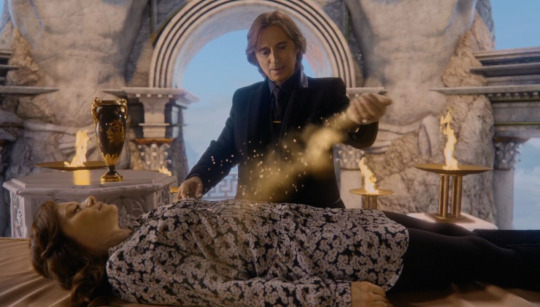
There is a more obscure Sandman legend that turns up in a nineteenth century short story called Der Sandmann (The Sandman), a nurse tells a small child.In this version that The Sandman sprinkles sand in the eyes of children who don't sleep to make their eyes fall out and then he eats the eyes. This was clearly the nanny twisting the benign "I'll make you sleep" Sandman to scare the child into going to bed. And might be where Neil got the idea for the Nightmare creature The Corinthian, who has a taste for human eyes.

In the nineteenth century a land that you go to when you dream became very popular in children’s literature. Often called the Land of Nod (which is the name of the place Cain fled to in the Cain and Abel story) it has also been called Slumberland (Nemo’s adventures in Slumberland) or the Dream-Time or The Dreaming (from Indigenous Australian lore).
The Animated series The Real Ghostbusters (based on the Ghostbusters movie) considered The Sandmen (there are apparently multiple) to be a "Class 6" apparition which I think was a mislabeling as in show canon, Class 6 is animal-like. He'd be class 7 or higher.
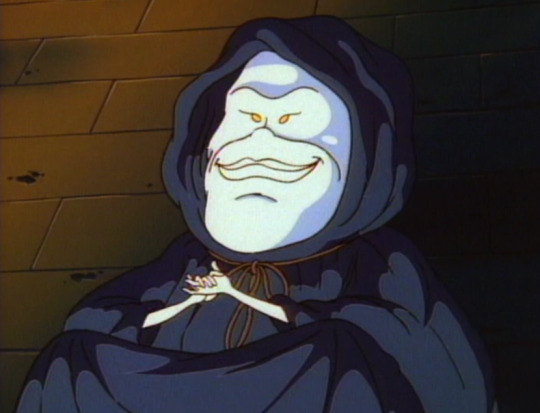
There's also a version of The Sandman in the animated movie Rise of the Guardians and he uses a very obscure part of Morpheus mythology. According to some sources Morpheus cannot or will not speak in the waking World. So Sandy in Rise of the Guardians is mute.

I think Neil Gaiman may have almost went with that lore, that Morpheus won't or can't speak in the waking world, but had changed his mind by issue 3.

In any event his speaking is at least partly telepathic for The Sandman AKA Dream AKA Morpheus in The Sandman comics by Neil Gaiman. That's why everyone hears their own native language when he talks.

Pitch, the villain of Rise of the Guardians, may have also been physically modeled on Morpheus from Neil Gaiman’s The Sandman.

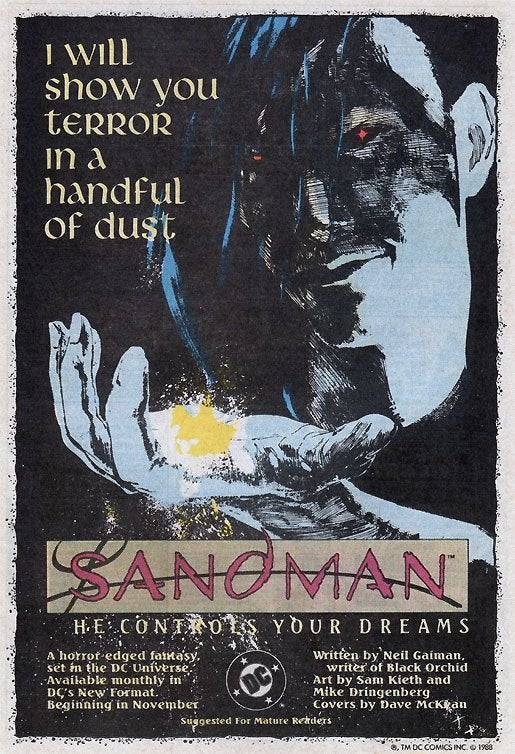
29 notes
·
View notes
Photo
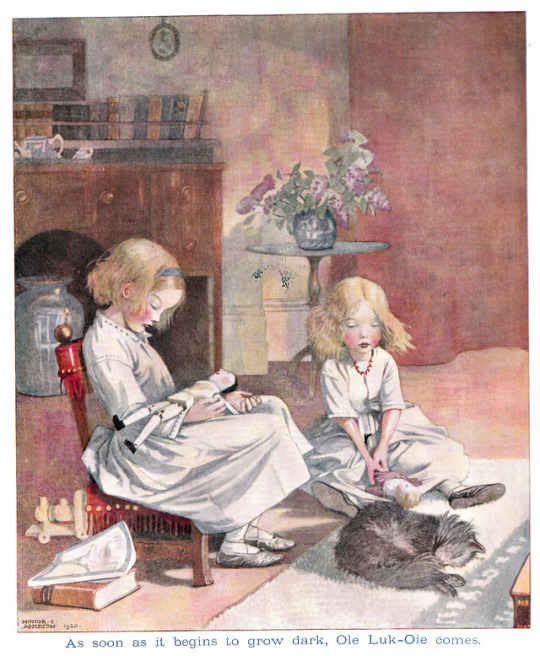
Ole Luk-Oie
Fairy Tales by Hans Christian Andersen, illustrated by Honor C. Appleton, 1926
#vintage#ole luke-oie#ole lukøje#honor c. appleton#illustration#vintage illustration#1920s#1926#hans christian andersen
51 notes
·
View notes
Photo

Hans Christian Andersen’s “Ole Lukøje”, Soviet book cover (1923)
243 notes
·
View notes
Note
Does fairy dust (or pixie dust) truly exist when it comes to faeries? It reminds me of the quote from Peter Pan: “All you need is faith, trust, and a little bit of pixie dust.”
There are many old stories that associate Faerie Folk with dust, though it is not the sparkling dust of your Peter Pan stories. It is, or so it appears, ordinary dust from the road. People once believed that dust clouds stirred up in the wind along the roads were said to be signs of Faeries traveling, often with the people they have taken.
Several tales involve Faeries throwing dust into the eyes of humans and then making their getaway while the human is forced to wipe their eyes clean. A similar idea is revisited in the tale of Yallery Brown where instead of dust, it is the seeds of a dandelion.
In George Sand's short story "La fee poussiere" a fairy like character is given the name “Fairy Dust” which explains the title.
And in Mary Augusta Ward's “Milly and Olly: or, A Holiday Among the Mountains” golden dust is mentioned as having been said to be thrown into a girl’s eyes to let her see the true beauty of a place. There are no real fae in the story, however a similar idea is also visited in Félicité de Choiseul-Meuse's 1820 fairytale "The Marble Princess," where gold dust is used to blind a serpent. And in "What Mr. Maguire Saw in the Kitchen," an 1862 story where dust was used to take the character’s five senses to an Otherworld beyond his body.
Other stories that involve both Faeries and dust often depict humans who have been trapped in Faerie for a very long time and crumble to dust upon returning to their own world.
But since you’ve asked of Fairy Dust from the Peter Pan stories, the culprit is likely the character of the Sandman. Born from Western and Northern European Folklore, the Sandman is a strange Fairy-like being who was said to sprinkle sand into the eyes of children to bring on dreams, and the sleep that remained in your eyes upon waking was said to be his handiwork.
As he was experimented with in literature, particularly in E. T. A. Hoffmann’s “Der Sandman” and Hans Christian Andersen’s “Ole Lukøje”, he was more and more closely associated with Fairies.
By the time we reach “Bluebell in Fairyland”, a children’s play in 1901, we have the character of the Dustman, a fairy who sprinkles golden dust to make children fall asleep, and they can enter Fairyland that way.
The play influenced many stories, such as Algernon Blackwood's “A prisoner in Fairyland” which involved a nearly identical character to the play who sprinkled golden dust to bring dreams and entry to Fairyland. But J.M. Barrie’s play and then novel of the Peter Pan stories is what solidified Fairy Dust into the magical golden dust that we are familiar with today.
Still in those stories we can see the connection between fairy dust, dreams, and a mysterious place that seems to be made from both magic and stories. It is interesting to note that in the book, though the children travel to Neverland, their parents return home to find them asleep in their beds. It is only in dreams that they can travel there, something borrowed from the Bluebell play.
It was Disney who changed the term Fairy Dust to Pixie Dust, and the dreamworld elements of Neverland are severely toned down in the animated feature.
It is interesting to note that some ideas do remain consistent over time as the Dust evolves through stories. The idea of it being cast into the eyes of humans to cause dreams and alterations of perception, to hide or to confuse like glamours do, and even to draw humans into otherworlds beyond their own...sometimes with their bodies...and sometimes just with their consciousness. Though in Barrie’s work it was flight that the dust granted and this is what we associate with it most, for most of its history the dust was something else entirely.
Whether it was merely dust thrown by a Faerie who needed a distraction, or enchanted golden dust from a Sandman in the night, this dust has the potential to be both frightening and sinister, as well as the stuff of dreams.
#dreams#fae#faerie#fairy dust#pixie dust#peter pan#eta hoffmann#hans christian andersen#fairyland#neverland#sandman#dust#gold dust#yallery brown
20 notes
·
View notes